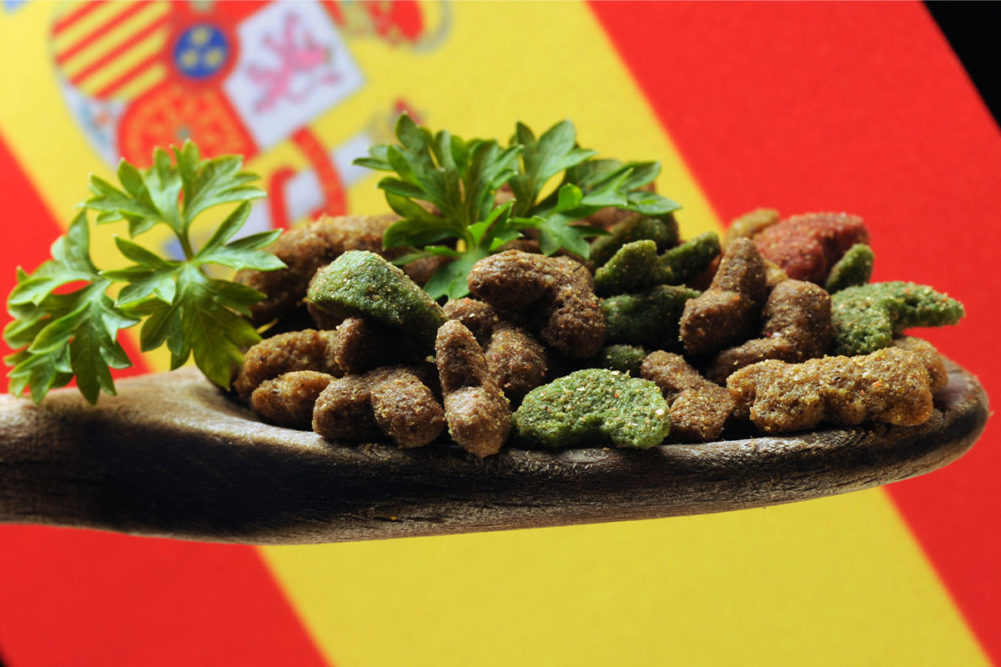MADRID — The National Association of Pet Food Manufacturers (ANFAAC) in Spain released its report on the country’s pet food and treat industry, detailing significant sales growth across the board in 2022 despite slight decreases in volume.
In 2021, there were more than 29 million pets in Spain, reflecting an increase in both dog and cat ownership caused by COVID-19, according to Santiago de Andrés, general secretary of the ANFAAC. This represented populations of 9.3 million dogs, 5.9 million cats, 7.9 million fish, 5 million birds, 1.5 million reptiles and 1.5 million small mammals.
According to the ANFAAC, the Spanish pet food market had a turnover of €1.71 billion ($1.85 billion USD) in 2022, an increase of 14.4% from €1.49 billion ($1.62 billion USD) in 2021. Despite this, sales volume for the industry witnessed a slight decrease of 0.5% in 2022 to 562,388 tons.
Species-wise, turnover increased 12.5% for dog food to €1.03 billion ($1.12 billion USD) in 2022. Dry dog food remains king in the sector, boasting sales of €736.3 million ($799.7 million USD), an increase of 12.8% from 2021. Wet dog food products experienced the most sales growth at 13.8%, amassing €141.5 million ($153.7 million USD) in sales in 2022. Dog snacks experienced a 9.5% increase in sales, topping €153.6 million ($166.8 million USD).
Though dog food products remain king in the Spanish pet food and treat industry, products for cats witnessed more significant growth. Turnover for cat food products increased 17.6% in 2022 to €676.9 million ($735.3 million USD). Dry cat food held the biggest share of sales in the feline nutrition sector, increasing 16.6% to €367.5 million ($399.2 million USD). Wet cat food sales increased 17.6%, topping €260.3 million ($282.7 million USD). Sales for cat snacks rose a whopping 25.7% to €49.1 million ($53.3 million USD).
Despite increases in turnover, sales volume experienced little to no growth in Spain. For dog food, sales volume fell 1% to 390,266 tons, while that of cat food increased 0.5% to 172,122 tons in 2022.
Format-wise, the volume of dry dog food decreased 0.8% to 322,068 tons in 2022, while dry cat food volume increased 1.8% to 115,929 tons. The volume of wet food for both dogs and cats shrank, decreasing 2.6% to 52,079 tons for dogs and 3% to 53,964 tons for cats. Pet snacks managed to overcome these trends, increasing 1.1% to 16,119 tons for dogs and significantly increasing 32.5% to 2,229 tons for cats.
According to the ANFAAC, the specialized pet and e-commerce channels played a key role in the Spanish pet food industry’s growth in 2022. Joint turnover in these channels increased 9.4%, with cat snacks in particular succeeding in the specialized and e-commerce channels. Volume-wise, the specialty and e-commerce channels boasted growth of 2.7%, with volume for cat snacks increasing in these channels by 34.9%.
The association attributed such significant growth of cat snacks to the humanization of pets, with pet owners seeking more treats to foster the human-animal bond.
“These figures once again demonstrate the optimal moment that the sector is going through, despite the difficulties in accessing raw materials, the increase in the price of energy and transport, and the rise in global inflation — obstacles that the industry continues to face with great effort,” de Andrés said.
Regarding trade, the European Union, the Middle East, Africa, America and Southeast Asia were the main export destinations for Spanish pet food products in 2022. According to the ANFAAC, Spanish pet food exports account for more than 30% of the global pet nutrition sector’s market value.
Read more global pet food and treat news from outside North America.



